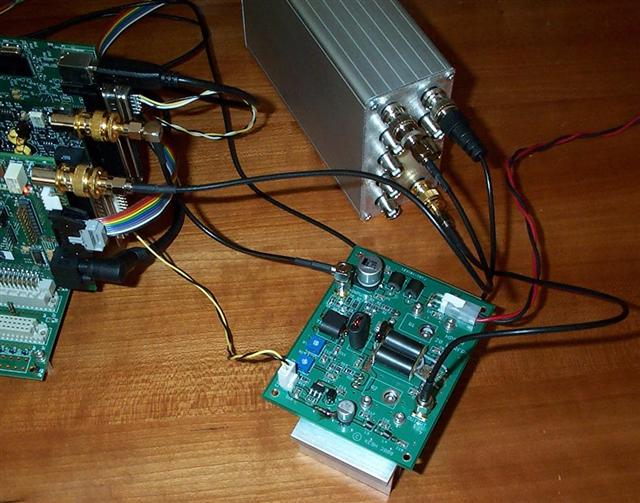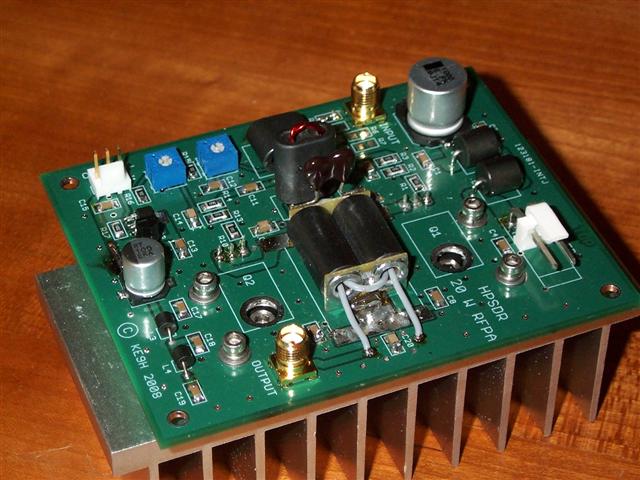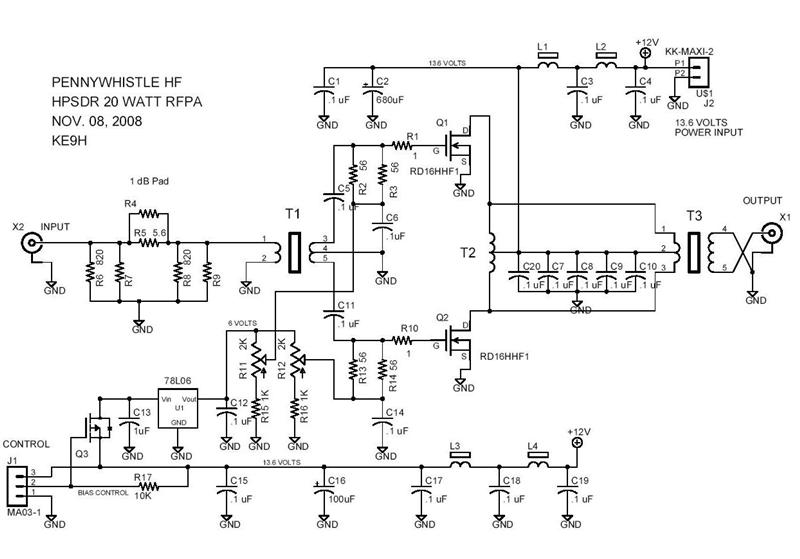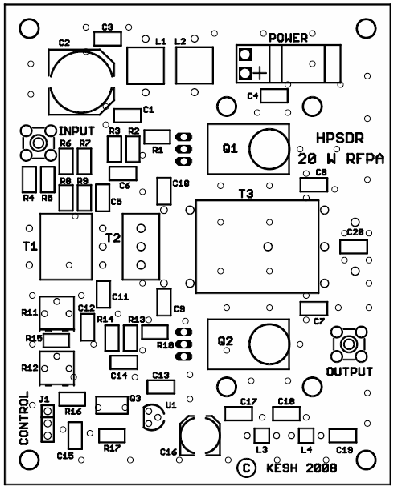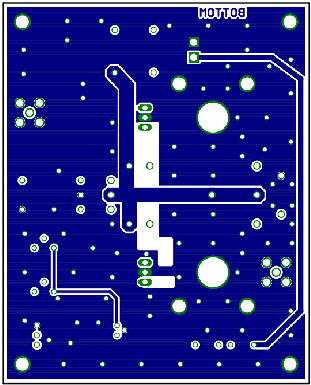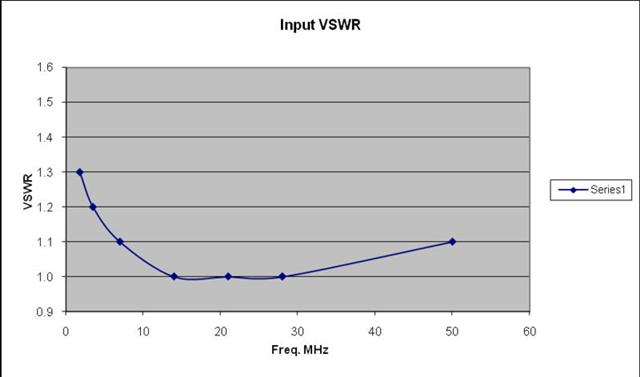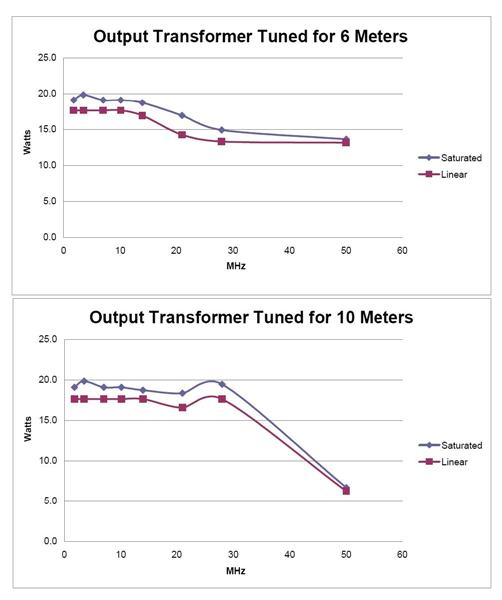PENNYWHISTLE
PennyWhistle - 16 to 20 Watt RF Power Amplifier
PennyWhistle is a compact RF power amplifier stage that can be used with Penelope and Alex to make a complete 16 to 20 Watt transmitter. Since any higher power HPSDR amplifier does not appear to be close in time, this amplifier can quickly and inexpensively be used to get an HPSDR on the air, either barefoot, or as a driver for a larger linear. It covers the same 160 Meter through 6 Meter bands as the rest of HPSDR.
It is 10 cm by 8 cm (half Euro-board size.)
The output stage is a single stage amplifier that uses a pair of TO-220 “16 Watt” Mitsubishi RD16HFF1 parts in push pull and has approximately 19 dB gain, depending where you bias it, so it will deliver 16 to 20 watts output with ¼ watt drive.
The photographs and data are from the first Alpha-1 unit built. Additional kits are already in the hands of Phil, VK6APH; Bill, KD5TFD; and Dick K9IVB.
I would expect this could be sold as a bare PC build-it-yourself kit. It uses surface mount, but would be easy to build. Easily wound transformers. As a pure kit, hopefully it could be offered in the same time frame as ALEX, and let people get on the air.
It will fit in a Euro-Card housing, if the heat extraction problem can be addressed. We need to extract about 20 to 30 watts of heat when transmitting. Dissipation in standby is negligible. The circuit is capable of continuous duty, provided that the heatsink is big enough to hold a reasonable temperature.
PennyWhistle 16 to 20 Watt RF PA using Mitsubishi “RD16” Transistors
Alpha-1 Schematic
Topside component layout.
The two output transistors are actually mounted underneath the PC board, with their heat sink tabs bolted to the main heatsink.
The PCB is mounted to the main heatsink with ¼ inch long #4-40 spacers at four locations in the vicinity of the PA transistors. The leads from the transistors are bent upwards and through the PCB and soldered from the top. Holes in the PCB allow unbolting the transistors from the main heatsink if needed.
Top side PCB artwork
PCB Bottom side artwork.
PennyWhistle input VSWR (without input attenuator.)
PennyWhistle Output versus frequency
